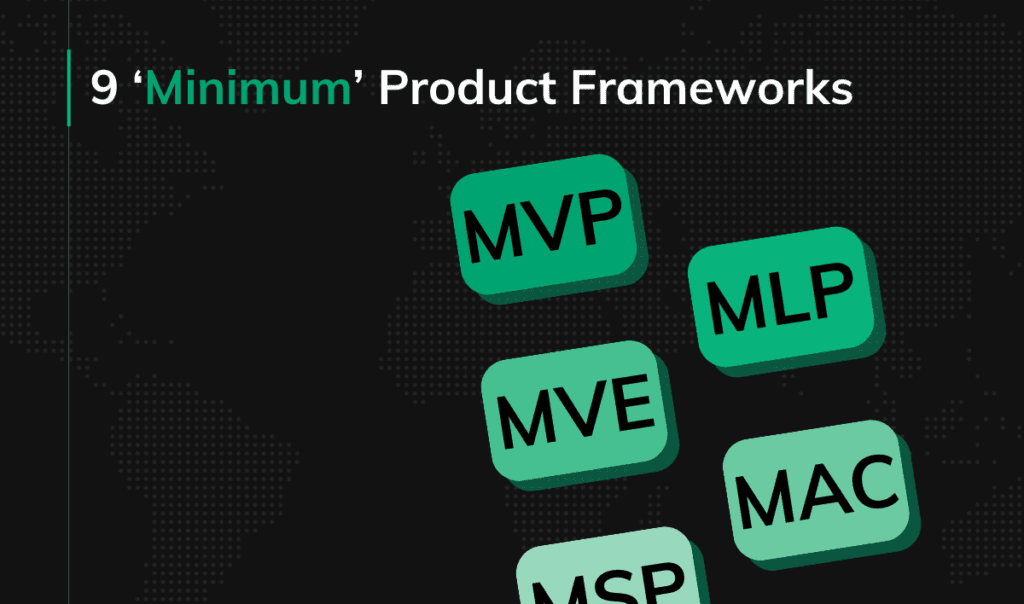What is hyper-personalization?

You’re browsing an online store, and it feels like it’s reading your mind. Each product that pops up is exactly what you’re looking for, and the special offers seem tailor-made for your interests and budget.
Scary (giving dystopia vibes)… and cool at the same time.
Welcome to the world of AI-powered hyper-personalization, where shopping online, taking care of your health, or using banking services is like having a personal concierge who knows your needs and preferences inside out. This isn’t a glimpse into a distant future; hyper-personalization is now.
Read on to learn more about this game-changer in user experience.
What is hyper-personalization?
Hyper-personalization is the process of using real-time data and advanced technologies like AI and machine learning to provide a highly relevant and personalized experience to each user.
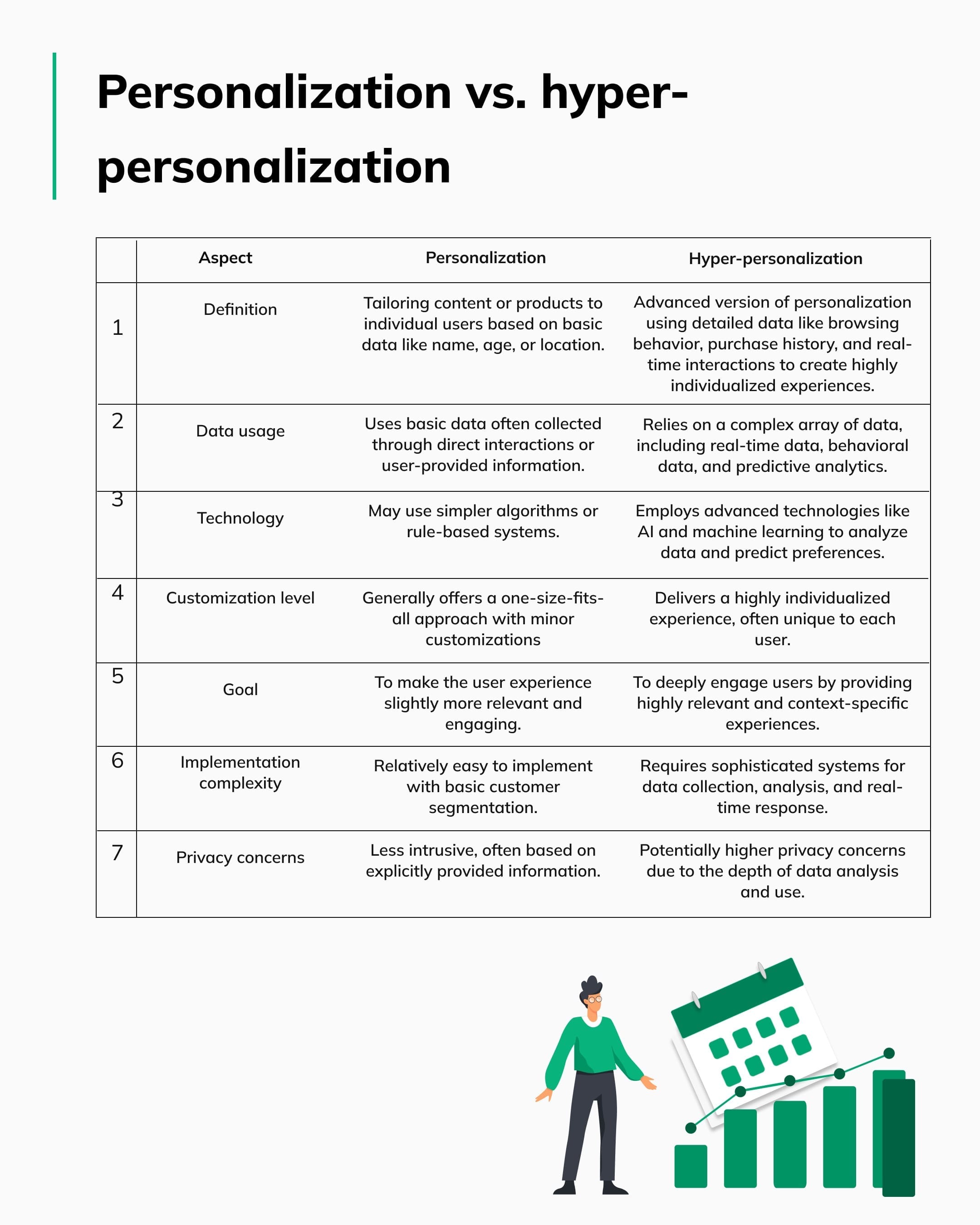
What is personalization vs. hyper-personalization?
Personalization involves tailoring experiences based on basic user information, while hyper-personalization uses advanced data analysis, including real-time data, to create highly specific and individualized user experiences.
Hyper personalization is the next level of tailored customer experiences.
Unlike basic personalization, which might just use your name in an email, hyper-personalization digs deeper. It uses data like browsing history, purchase patterns, and preferences to offer a truly individualized experience.
Think of it as the difference between getting a generic birthday card and one perfectly capturing your unique interests.
Hyper-personalization. Examples
In the table below, you can see the various applications and examples of hyper-personalization and how it differs from traditional personalization.
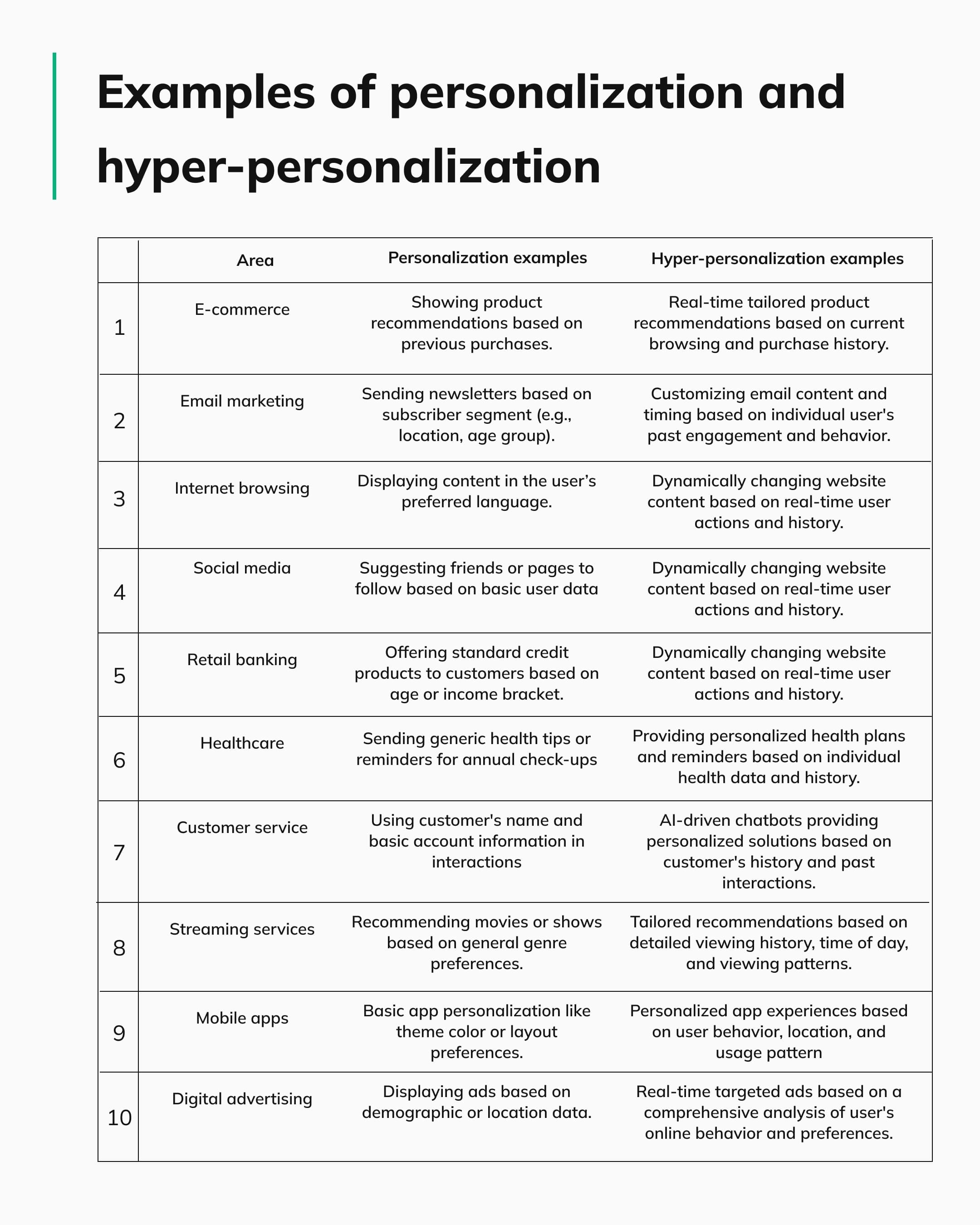
Benefits. Why is hyper-personalization good?
The Deloitte report found that 80% of customers are more likely to purchase from a company that offers personalized experiences. Moreover, 69% of online shoppers say that the quality or relevance of a company’s message influences their perception of the brand. These findings suggest that hyper-personalization is a powerful tool that can help businesses improve their customer satisfaction, loyalty, and sales.
- Enhanced customer engagement and satisfaction: Customers love feeling understood. Hyper-personalization makes them feel special and valued, leading to a stronger connection with the brand.
- Removing obstacles from the sales process that could complicate user experience. Hyper-personalization avoids overwhelming customers with too many choices and smartly highlights products that resonate with their specific needs and preferences. This way, you can address customer pain points and provide optimal solutions.
- Increased conversion rates and sales growth: When customers see products that resonate with their needs, they’re more likely to buy.
- Customer loyalty and advocacy: Hyper-personalized experiences foster deeper customer connections, leading to increased brand loyalty, advocacy, and customer lifetime value.
How does hyper-personalization work?
To explain how hyper-personalization works, let’s use the example of an online retail store and break it down into steps:
- Data collection: The first step involves gathering data. For our online retail store, this includes tracking user behaviors such as browsing history, purchase history, items added to the cart but not purchased, search queries, and even time spent on specific product pages.
- Data analysis using AI and ML: The collected data is then analyzed using AI and machine learning algorithms. These technologies identify patterns in the data – for instance, if a user frequently views sports apparel or if they tend to purchase items during seasonal sales.
- Building customer profiles: Based on the analysis, a detailed customer profile is created. This profile includes not just the basic demographics of the user but also their preferences, buying habits, and potential interests.
- Predictive analytics: The system then uses predictive analytics to forecast future behaviors. For example, if a user regularly buys running shoes every six months, the system predicts when they are likely to make their next purchase.
- Real-time personalization: As the user interacts with the site, real-time personalization kicks in. If the user is browsing running shoes, the system might immediately display the latest models, deals on their preferred brands, or complementary products like athletic socks or fitness trackers.
- Customized communication: Hyper-personalization also extends to communication. The retail store sends out personalized emails or app notifications, perhaps alerting users about an upcoming sale on sports gear or new arrivals in their preferred brand.
- Feedback loop: Finally, the user’s response to these personalized experiences is fed back into the system, continuously refining the personalization algorithms. For example, if the user purchases a recommended product or clicks on a personalized email link, that information is used to further tailor future recommendations and communications.
Throughout this process, the key is the seamless integration of various technologies and the continual learning and adaptation of the system based on user interactions. This creates a highly personalized shopping experience, where each user feels the retail site is uniquely attuned to their preferences and needs. The key technology behind hyper-personalization is AI; here’s a guide on implementing AI into your software.
Hyper-personalization, thus, not only enhances the user experience but also significantly increases the likelihood of user engagement and sales conversion.
By 2026, one third of all new apps will use AI to create personalized and adaptive user interfaces. Hyper-personalization is a big trend. Learn more about it and the other 25 AI predictions for 2024.
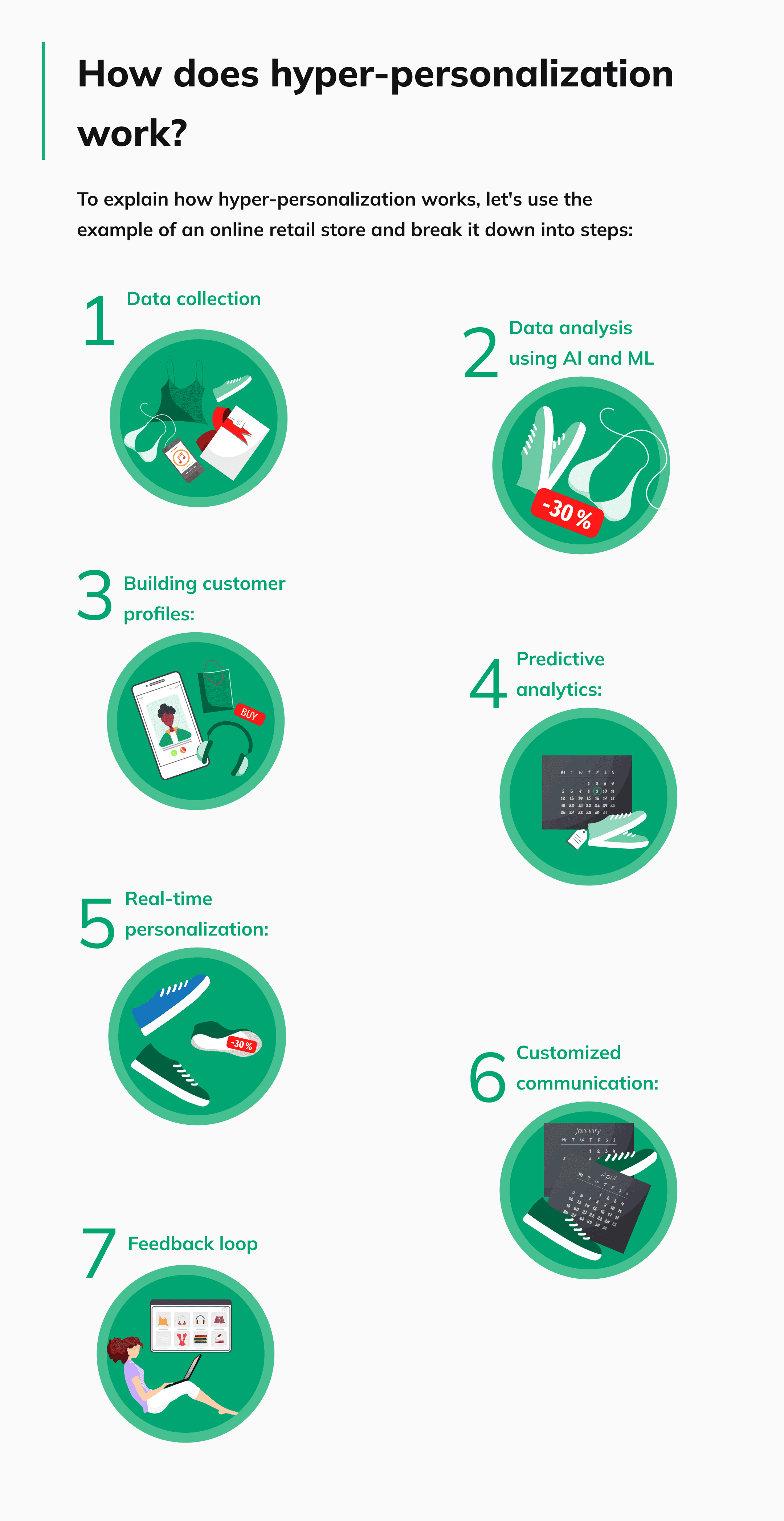
The role of technology in hyper-personalization
The key technologies driving hyper-personalization include:
- Artificial intelligence: Employs algorithms to analyze user data and make predictions or decisions.
- Machine learning: A subset of AI that enables systems to learn and improve from experience without being explicitly programmed.
- Data analytics: Involves examining large data sets to uncover hidden patterns, correlations, and insights.
- Big Data technologies: Facilitate the handling of enormous volumes of data that feed into personalization algorithms.
- Predictive analytics: Uses statistical algorithms and machine learning techniques to identify the likelihood of future outcomes based on historical data.
- Natural Language Processing (NLP): Enables computers to understand, interpret, and respond to human language in a useful way.
- Customer Relationship Management (CRM) systems: Help in collecting and managing customer data, which is essential for personalization.
- Internet of Things (IoT): Connects everyday devices to the internet, providing more data points for personalization.
- Cloud computing: Offers the necessary infrastructure and scalability for storing and processing large data sets used in hyper-personalization.
- Blockchain: While more nascent, it has potential applications in securing personal data and ensuring privacy in personalization efforts.
Who uses hyper-personalization? Examples of hyper-personalization across industries
Below are 6 examples of hyper-personalization in e-commerce, banking, and healthcare.
Example of hyper-personalization in e-commerce
Amazon creates a unique homepage experience for each user through predictive analytics and item-based collaborative filtering. This method analyzes a user’s purchase history and compares it with others to suggest related products.
Amazon’s algorithm also combines purchase data with browsing habits, offering more tailored recommendations. For example, a customer buying a dog chew might receive suggestions for Pixar-themed dog toys. This approach generates 35% of Amazon’s revenue.
Stitch Fix uses AI and ML to personalize fashion recommendations and create individualized online stores for customers. They collect extensive data on customer preferences and sizes, using a gamified feedback system to refine style selections.
Their algorithms, including a foundational “latent style” model, help curate highly tailored fashion items and outfits. Stitch Fix also maintains human stylists in the loop, who use algorithmic suggestions and customer notes to fine-tune selections.
This blend of technology and human input optimizes customer satisfaction and reduces return rates, with a significant portion of sales coming from these personalized recommendations.
Examples of hyper-personalization in banking
Banks increasingly adopt AI to enhance customer service. As mentioned by The Banker, one notable example is Erica, a virtual financial assistant developed by Bank of America. Erica leverages data from account balances, past transactions, spend patterns, payment alerts, and duplicate charges to engage customers in personalized, proactive, and predictive conversations.
Another example is Monzo, a UK challenger bank. By analyzing user behavior and identifying common pain points, Monzo has equipped its customer service team with the knowledge and tools to resolve over 85% of daily business queries directly.
Examples of hyper-personalization in healthcare
23andMe is a personal genomics and biotechnology company that offers direct-to-consumer genetic testing services. By analyzing a person’s DNA from a saliva sample, 23andMe provides information about the individual’s ancestry, genetic predispositions to certain health conditions, traits, and wellness-related characteristics. The service aims to help individuals understand their genetic makeup and how it may impact their health and personal characteristics. Additionally, 23andMe engages in genetic research by using aggregated data from consenting customers for various studies.
Consumers are moving away from generic diets towards personalized eating plans, driven by the science of nutrigenomics. This field explores the interaction between food and genes, offering tailored dietary recommendations based on individual DNA. The personalized nutrition market, poised to reach $11.5 billion by 2025, leverages DNA testing for customized food recommendations. Companies like Thermofisher, in collaboration with IXLayer, provide DNA tools for businesses to integrate genetic-based personalization into their offerings.
How to design hyper-personalization functionalities?
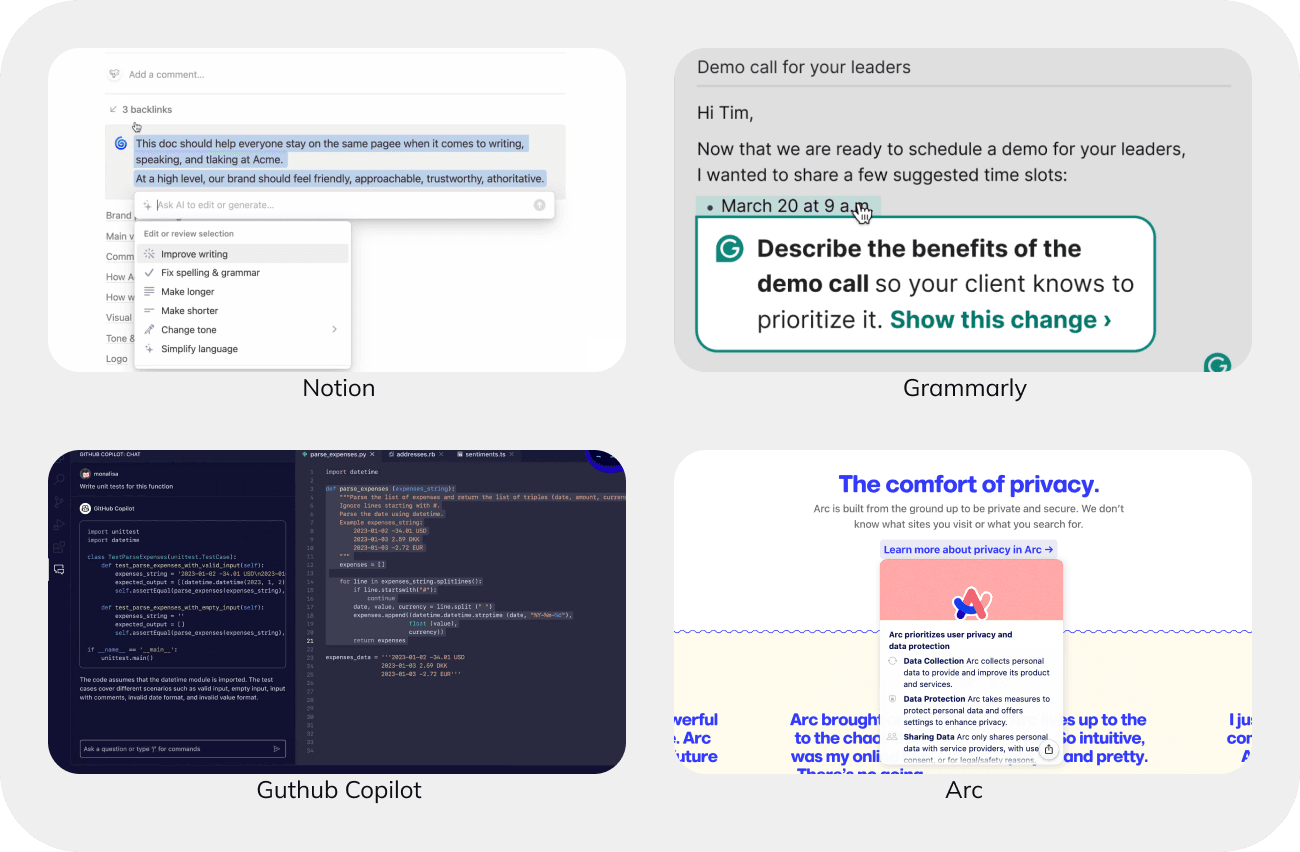
Designing AI interfaces for hyper-personalization requires a smart approach. It focuses on making AI work better for each user. Let’s look at five key areas that help create AI products tailored to individual needs.
Adaptive user interfaces
Adaptive user interfaces form the base of personalized AI experiences. These interfaces change based on how you use them. Think of Notion or VS Code, where you can select text and ask AI to summarize or translate it. Or consider Miro’s canvas, where AI can organize your sticky notes automatically.
Predictive features
Predictive features guess what you (the user) might want next. Spotify’s DJ agent is a good example. It suggests music based on what you’ve listened to before. This kind of AI is great at recommending content and predicting what you’ll like in the future.
Customization & confidence level
Customization options let you adjust your AI experience. You can give feedback, like thumbs up or down, to improve future suggestions. Some AIs even show how sure they are about their predictions (so-called confidence level). This helps you decide how much to trust the AI’s recommendations.
Contextual awareness
Contextual awareness means the AI understands what you’re doing right now. Arc browser, for instance, gives AI-generated summaries when you hover over links. Figma puts AI options in its right-click menu. These features fit naturally into what you’re already doing.
Multimodal interaction
Lastly, multimodal interaction lets you use AI in different ways. You can type, upload images, record your voice, or drag and drop content. This makes AI easy to use, no matter how you prefer to work with it.
If you want to learn more about what properly designed AI interfaces should look like, check this article: How to design a chatbot? Designing AI interfaces
Challenges in implementing hyper-personalization
- Privacy concerns: With great personalization comes great responsibility for privacy. Customers want personalized experiences but also value their data privacy. Hyper-personalization can lead to… hyper-personalized social engineering attacks, as it was with the above-mentioned 23andMe (hackers stole ancestry data on 6.9 million users).
- Data collection: Accurate and comprehensive data collection is key. The more data you have, the better the personalization, but it has to be collected ethically and legally.
- Legal issues: Compliance with laws are crucial. Businesses must ensure they’re using data in a way that respects customers’ rights.
- Algorithm bias: AI algorithms used for hyper-personalization are trained on data, and if the data is biased, the algorithms will reflect that bias. This can lead to unfair or discriminatory treatment of certain groups of customers.
These challenges demand we carefully examine the ethical implications: How can the future of AI be harnessed to create a responsible and trustworthy hyper-personalized experience?
Conclusion
What is the future of hyper-personalization? When it comes to reasons for marketing professionals to use artificial intelligence (AI) to improve customer experience (CX) worldwide, 40% of marketers surveyed named “personalization, even hyper-personalization” as the number three reason to do it.
According to A2Z Market Research, the global hyper-personalization market is expected to grow at a significant CAGR of +11% during the forecasting period from 2022 to 2030.
Hyper-personalization is reshaping how businesses interact with customers. We will see more personalized content in social media, marketing campaigns, banking, retail product recommendations, and any other products and services around us. Our digital experience is going to become more personal than ever before.






